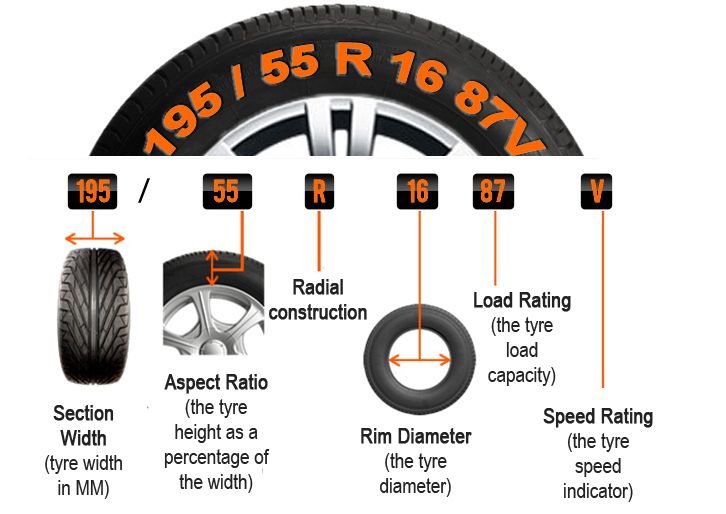What do the numbers mean on the sidewall of your tire? At first glance, you look at your tire sidewall and think, “’Do I need a super secret decoder ring to read this?” In addition to the model name of the tire there is a series of numbers that at first, you don’t deem important. However, these numbers are extremely helpful, especially when it’s time to replace your tires. Here’s a quick breakdown to help you decipher one of the best kept secrets in the automotive world: How do you read tire sizes?
TIRE SIZE
Example: P225/50/R17 98H
P identifies your tire as a Passenger Tire. The P stands for PMetric. If your tire size starts with LT rather than a P than it identifies the tire as a Light Truck tire.
225 identifies the tire section width, which is the measurement of the tire from sidewall to sidewall in millimeters. This measurement varies depending on the rim to which it is fitted.
(There are 25.4 millimeters per 1 inch.)
50 is the two-figure aspect ratio. This percentage compares the tire's section height with the tire's section width. For example, this aspect ratio of 50 means that the tire's section height is 50% of the tire's section width.
R indicates the construction used within the tires casing. R stands for radial construction. B means belted bias and D stands for diagonal bias construction.
17 The last dimension listed in the size is the diameter of the wheel rim, which is most often measured in inches.
LOAD INDEX AND SPEED RATING
Example: P225/50/R17 98H
The load index and speed rating, or service description, are the numbers that follow the tire size.
The load index tells you how much weight the tire can support when properly inflated. Load indices range from 75 - 105 for passenger tires, with each numeric value corresponding to a certain carrying capacity.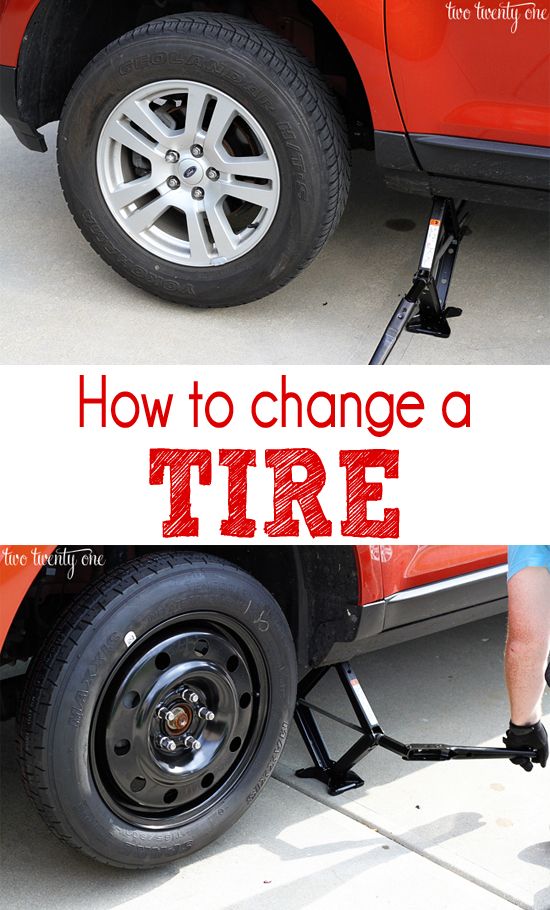 The carrying capacity for each value can be found on a load index chart. On each U.S. passenger car tire, the load limit is listed in pounds. European tires have the load limit listed in kilograms and sometimes pounds.
The carrying capacity for each value can be found on a load index chart. On each U.S. passenger car tire, the load limit is listed in pounds. European tires have the load limit listed in kilograms and sometimes pounds.
H Speed ratings are represented by letters ranging from A to Z. Each letter coincides to the maximum speed a tire can sustain under its recommended load capacity. For instance, S is equivalent to a maximum speed of 112 mph. Even though a tire can perform at this speed, Continental Tire does not advocate exceeding legal speed limits.
Rating | Maximum Speed |
Q | 100 MPH |
S | 112 MPH |
T | 118 MPH |
U | 124 MPH |
H | 130 MPH |
V | 149 MPH |
W | 168 MPH |
Y | 186 MPH |
Z | Over 149 MPH |
DOT Serial Number
The "DOT" symbol certifies the tire manufacturer's compliance with the U. S. Department of Transportation (DOT) tire safety standards. Tires made in the United States have the DOT serial number located on the inside sidewall near the rim.
S. Department of Transportation (DOT) tire safety standards. Tires made in the United States have the DOT serial number located on the inside sidewall near the rim.
Below is a description of the serial number. Starting with the year 2000, four numbers are used for the Date of Manufacture, the first two numbers identify the week and the last two numbers identify the year of manufacture. This identifies how old a tire is.
Prior to year 2000 three numbers are used for the date of manufacture, first two numbers identify the week and the last number identifies the year of manufacture. To identify tires manufactured in the 90s, a decade symbol (a triangle on its side) is located at the end of the DOT serial number.
istockphoto.com
Tires hold a lot of information if you know how to read the numbers and letters on them, but many people don’t know how to read a tire sidewall for basic data like tire size. So, what do the numbers on a tire mean? The good news is that the answers are relatively straightforward, but the bad news is that it’s a great deal of info to memorize..jpg) Even professional mechanics may need to refer to load index, speed rating, and tire size charts to verify exactly what tire numbers mean. Read over the detailed explanation below if you need a clear method for reading a tire sidewall.
Even professional mechanics may need to refer to load index, speed rating, and tire size charts to verify exactly what tire numbers mean. Read over the detailed explanation below if you need a clear method for reading a tire sidewall.
When you need new tires to replace worn ones, it’s important to know the size of your old tires—especially if you’re not buying a full set. Tire size can be found on the sidewall, represented by an alphanumeric code indicating the tire type, width, aspect ratio, construction type, wheel diameter, load index, and speed rating.
Check the tire’s sidewall for a series of letters and numbers 11 to 13 characters in length. The first character should be a letter indicating the tire type, referring to the type of vehicle for which the tire is designed.
P: If the code starts with a P, then the tire is made for passenger vehicles like sedans, crossovers, minivans, and most SUVs and pickup trucks. These are commonly known as P-metric tires.
These are commonly known as P-metric tires.
LT: Full-size pickup trucks and SUVs may have tires with the LT designation, which stands for “light truck.” These tires are typically made for carrying heavy loads or towing trailers.
ST: Typically seen on a variety of trailers, ST stands for “special trailer.” Tires with the ST designation should never be used on cars, vans, SUVs, or any other type of passenger vehicle.
No Letter: Some tire size codes don’t begin with a letter, so they fall into a separate category. These are typically European metric sizes. While those tires are still measured in millimeters and could be similar to a P-metric tire size, they may have a different load capacity.
istockphoto.com
There should be a three-digit number after the initial letter(s). This number indicates the width of the tire in millimeters. So, if the number listed is 215, then the tire width measures 215 mm. This measurement is vital for finding replacement tires, but the tire’s width is also needed to calculate the aspect ratio.
This measurement is vital for finding replacement tires, but the tire’s width is also needed to calculate the aspect ratio.
The next symbol on the tire sidewall is a forward slash, followed by two digits representing the aspect ratio, or the ratio of tire height to tire width. Tire height is measured from the wheel rim to the top of the tire tread, but it’s written as a percentage on the sidewall. For this reason, tire width is required to calculate tire height.
If the first three digits representing the tire width are 215 and the following aspect ratio digits are 65, the tire is 215 mm wide and the height is 65 percent of the width. You can calculate the exact measurement relatively easily with the following formula, where AR equals the aspect ratio, TW equals tire width, and TH equals tire height.
(AR/100) x TW = TH
(65/100) x 215 mm = 139.75 mm
RELATED: The Best Tire Inflators
One or more letters, an R or D, should follow the two tire measurements. On some tires, there may also be an F, but that should still be followed by an R or a D. This letter indicates how the tire is constructed.
On some tires, there may also be an F, but that should still be followed by an R or a D. This letter indicates how the tire is constructed.
R: This designation is the most common for modern tires. The R stands for “radial tires,” which have superior road grip, gas mileage, and ride comfort. Radial tires are made with multiple layers of rubber-coated cords laid perpendicular to the direction of travel. These cords are made using a blend of polyester, steel, and fabric to improve overall tire durability.
D: The D designation corresponds to bias tires. These tires have diagonal or crisscrossed cord plies and are sometimes used on motorcycles and trailers. However, this tire construction type isn’t common for the average passenger vehicle.
Two digits should be listed after the construction type. These numbers express the diameter of the wheel in inches. This means that if the number provided is 17, then the tire is designed to fit on a 17-inch wheel.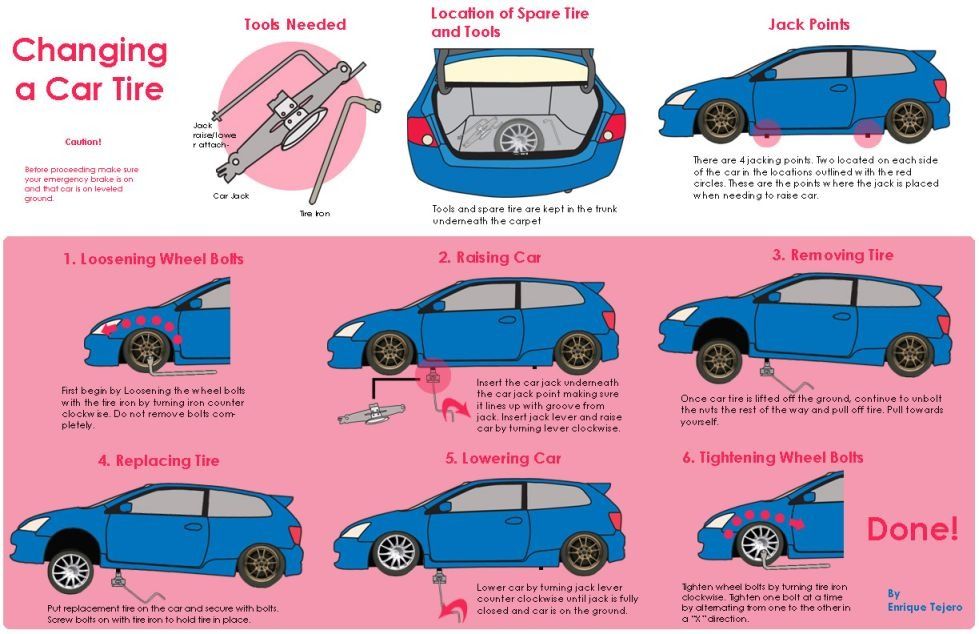 Mind that this number isn’t a measurement of the tire’s tread-to-tread diameter; it represents the internal diameter from the two bead seat areas on the inside of the tire so that you know the appropriate wheel size for the tire.
Mind that this number isn’t a measurement of the tire’s tread-to-tread diameter; it represents the internal diameter from the two bead seat areas on the inside of the tire so that you know the appropriate wheel size for the tire.
The tire load index is a code that references the amount of weight a single tire can handle. It’s listed as a two- or three-digit number after the wheel diameter. To determine the weight in pounds, refer to a load index chart like the one provided below. Once you find the load capacity for one tire, then (assuming all of your tires’ load capacities match) you can calculate your vehicle’s maximum load by multiplying the single tire load capacity by four.
75 = 852 lbs
78 = 937 lbs
81 = 1,019 lbs
84 = 1,102 lbs
87 = 1,201 lbs
90 = 1,323 lbs
93 = 1,433 lbs
96 = 1,565 lbs
99 = 1,709 lbs
102 = 1,874 lbs
105 = 2,039 lbs
108 = 2,205 lbs
111 = 2,403 lbs
114 = 2,601 lbs
117 = 2,833 lbs
120 = 3,086 lbs
Related: How to Use a Tire Pressure Gauge
istockphoto. com
com
Similar to the load index, tire speed ratings indicate the maximum speed for which a tire is rated. Tire speed rating is often represented by a letter, but it can also be a letter and a number. In rare cases where the speed rating exceeds 186 mph, it may be designated by a ZR followed by (Y). See the speed rating chart below for a complete list of speed ratings and their meanings.
A1 = 3 mph
A2 = 6 mph
A3 = 9 mph
A4 = 12 mph
A5 = 16 mph
A6 = 19 mph
A7 = 22 mph
A8 = 25 mph
B = 31 mph
C = 37 mph
D = 40 mph
E = 43 mph
F = 50 mph
G = 56 mph
J = 62 mph
K = 68 mph
L = 75 mph
M = 81 mph
N = 87 mph
P = 93 mph
Q = 99 mph
R = 106 mph
S = 112 mph
T = 118 mph
U = 124 mph
H = 130 mph
V = 149 mph
W = 168 mph
Y = 186 mph
(Y) = >186 mph
ZR = This may appear on tires rated above 149 mph. It’s also used to indicate >186 mph when accompanied by the (Y) symbol.
It’s also used to indicate >186 mph when accompanied by the (Y) symbol.
RELATED: The Best Tire Pressure Gauges for Car Owners
Every tire sold in the U.S. needs to have a Department of Transportation (DOT) identification number. This number indicates a tire has passed minimum safety requirements for sale in the U.S., and it also includes manufacturer-specific coding to denote what company manufactured the tire, where it was made, and digits for tracking the sale of the tire in case it must be recalled.
The last four digits of this DOT serial number are the most useful for the average driver. The first two digits represent the week the tire was made, while the last two digits represent the year. If this number is 2620, then the tire was manufactured in the 26th week of 2020.
istockphoto.com
Manufacturers selling tires in the U.S. are also required by the DOT to grade their tires according to Uniform Tire Quality Grade (UTQG) standards to rate treadwear, traction, and temperature resistance.
The treadwear rating is the first UTQG figure provided, and it’s generated using a 7,200-mile wear test. Tires are graded based on the rate of wear they would endure after being driven for 7,200 miles. The ratings are relatively straightforward: A tire with a grade of 100 will wear out three times faster than a tire with a grade of 300. Similarly, a tire with a grade of 600 will last twice as long as a tire with a grade of 300.
Traction ratings are based on tire grip and a tire’s ability to stop in a straight line on wet concrete or asphalt. Traction ratings include AA, A, B, or C. Just like in academic grading, higher letter grades mean better ratings, with AA being the best tire traction rating.
Tire temperature ratings include A, B, and C, and tires with an A rating are able to withstand greater temperatures and dissipate heat more quickly than lower-rated tires. Depending on a tire’s design, it will have a certain level of resistance to heat; higher temperature ratings translate to better heat resistance at higher speeds.
istockphoto.com
The letters M+S on a tire sidewall stand for “mud and snow.” Expect to see this code on all-weather tires designed for muddy conditions and light snow. The M+S code can also be followed by an E (M+SE) for studded snow tires. If you regularly drive through heavy snowfall, you can additionally look for tires featuring a mountain and snowflake on the sidewall—this symbol means it’s a winter tire.
Some tires may be listed as directional or unidirectional. This means the tire needs to be installed facing in a specific direction. To make it simple, the correct direction is represented by an arrow. This rotation arrow points in the direction which the tire should rotate when the vehicle is moving forward. Tires that aren’t unidirectional will not include a rotation arrow, so don’t be surprised if this symbol is missing from your sidewall.
RELATED: 13 Hacks Every Car Owner Should Know
Introduction
What is the feature of the directional tread pattern?
Advantages and disadvantages of
directional tiresHow to properly install directional tires
Conclusion
When choosing good tires, you often face the problem of not only a huge number of models, but also a variety of tread patterns, which also need to be sorted out. One of the most popular patterns is the traditional directional pattern, which has been used on the tread surface of a wide variety of tires for decades.
One of the most popular patterns is the traditional directional pattern, which has been used on the tread surface of a wide variety of tires for decades.
What are directional tires and why are they still in demand not only among motorists, but also among professional motorcycle racers? In the article, we will reveal all the secrets and technologies of directional tires, as well as show you how to install them correctly. Here, nuances and discoveries await us at every step.
There are four types of car tire tread pattern:
directional symmetrical,
non-directional symmetrical,
non-directional asymmetrical,
directional asymmetric.
Each drawing is designed for its own version of the road and has its own set of advantages. Different tread patterns have different functionality and behavior on the road. When mounting tires on wheels, their own installation principles also work, which will need to be strictly observed so as not to create an emergency. We will talk about them in the corresponding section.
We will talk about them in the corresponding section.
The essence of the directional tread design is clear at a glance: the blocks, ribs and tread grooves of the V-pattern are directional, spinning the wheel in a certain direction. Most often, directional tires are found in winter models, but there are many of them among summer ones. In symmetrical tires, both halves of the directional tread are mirrored, in an asymmetric design, both halves have a different structure and different functionality.
It is necessary to mount the wheels only in the right direction, otherwise all the advantages will come to naught, and at the same time problems with handling and accelerated wear will be added. Excessive strong pressure will accumulate in the center of the working area, due to which the tire will begin to rise above the road and harm traction in how many areas.
The directional tread pattern is best suited for wet tarmac, as the grooves that widen from the center to the sides are much better at shedding water from the contact surface. This not only improves grip on wet surfaces, but also works in favor of protection against the effect of hydroplaning. This works even better for a rear-wheel drive car - the front wheels will quickly clear the water before the rear axle sets foot on the road. Accordingly, contact with the track in such a car will be much more thorough.
This not only improves grip on wet surfaces, but also works in favor of protection against the effect of hydroplaning. This works even better for a rear-wheel drive car - the front wheels will quickly clear the water before the rear axle sets foot on the road. Accordingly, contact with the track in such a car will be much more thorough.
The directional pattern of the winter models excels in raking snow and removing dirt from the contact surface - ideal for snowy trails in the winter.
On a dry summer surface, they also give the car a couple of advantages - first of all, it concerns directional and lateral stability. For high-speed tires, this is one of the most relevant designs, as directional tires have a positive effect on the reactions of the car at high speed.
However, their driving disadvantage is the increased noise level during active work on asphalt, and the higher the speed, the stronger the rumble. Also, directional tires are more expensive than non-directional tires, but cheaper than asymmetric ones.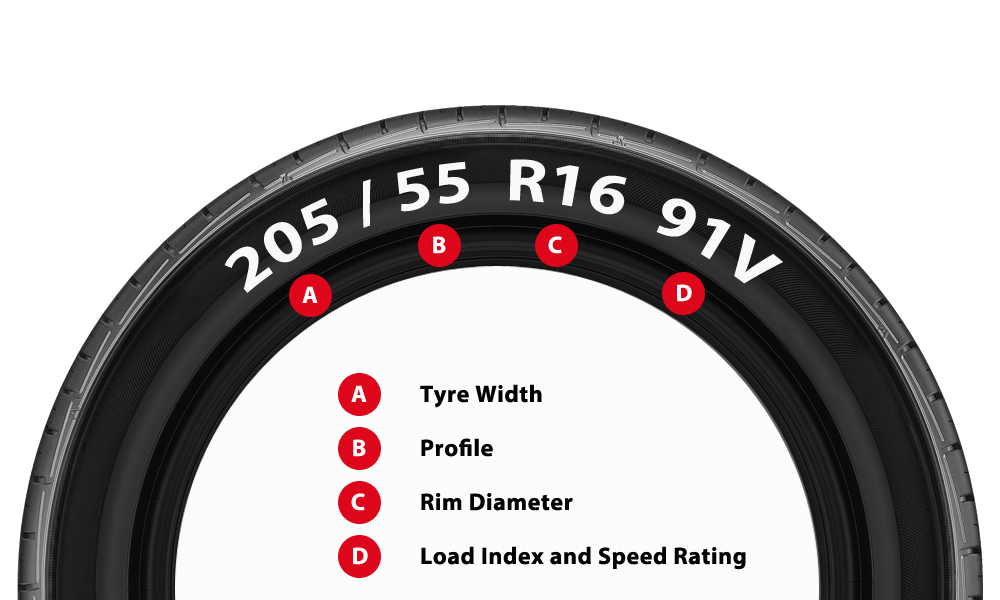 It is better not to install directional tires if you often drive on dirt roads or are completely forced to drive off-road. They will not show effective work on soft and medium hard surfaces. For rural areas, a tread pattern with a non-directional arrangement of large lugs is better suited. Remember that, being put on disks, wheels with directional rubber can only be changed from the front axle to the rear and vice versa, but not rearranged on the sides. To do this, the tires will have to be disassembled and put as needed.
It is better not to install directional tires if you often drive on dirt roads or are completely forced to drive off-road. They will not show effective work on soft and medium hard surfaces. For rural areas, a tread pattern with a non-directional arrangement of large lugs is better suited. Remember that, being put on disks, wheels with directional rubber can only be changed from the front axle to the rear and vice versa, but not rearranged on the sides. To do this, the tires will have to be disassembled and put as needed.
Although we've talked about directional tires, it's the symmetrical design that's most common. Asymmetric directional pattern is very rare. This is due to the fact that such tires are not only much more difficult and expensive to manufacture, but they have one serious drawback for car owners. Due to the very strict installation scheme for the car, constant difficulties arose with spares - I had to constantly carry two spare wheels with me instead of one, because you never know which tire will be damaged, and you can’t change directional asymmetric tires with sides.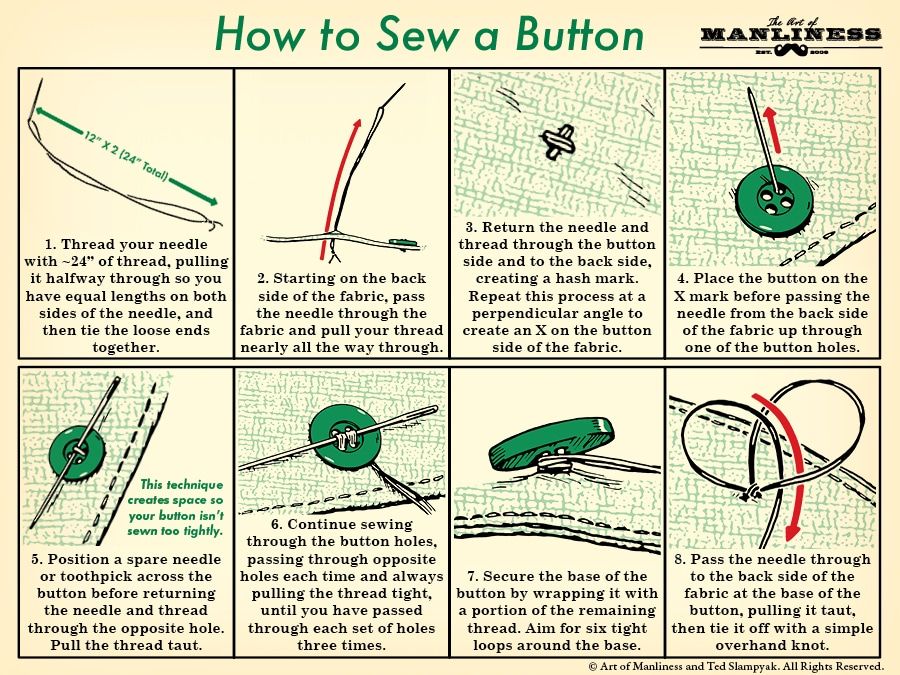 In addition, the warehouses constantly accumulated tires for only one side, which are completely useless without a paired wheel.
In addition, the warehouses constantly accumulated tires for only one side, which are completely useless without a paired wheel.
As mentioned above, one of the "secrets" of directional tires is their installation pattern. Simply put, you need to find the inscription Rotation (from the English. "Rotation") with an arrow on the sidewall. It is this marker that is an indicator - in which direction the tire pattern should “look” when installed on a car. If you make a mistake with the direction of rotation and put the rubber against the arrow, then the drainage system will rake in water like a mill, and not discard it, leveling all the advantages of the model, or even exacerbating them. The fact that the tires are installed incorrectly will tell you a sharply increased noise in the cabin.
If for some reason you could not find this marker, then you can do it even easier - pay attention to the tire tread pattern itself. The rubber of the directional design is a kind of "herringbone" that is directed forward.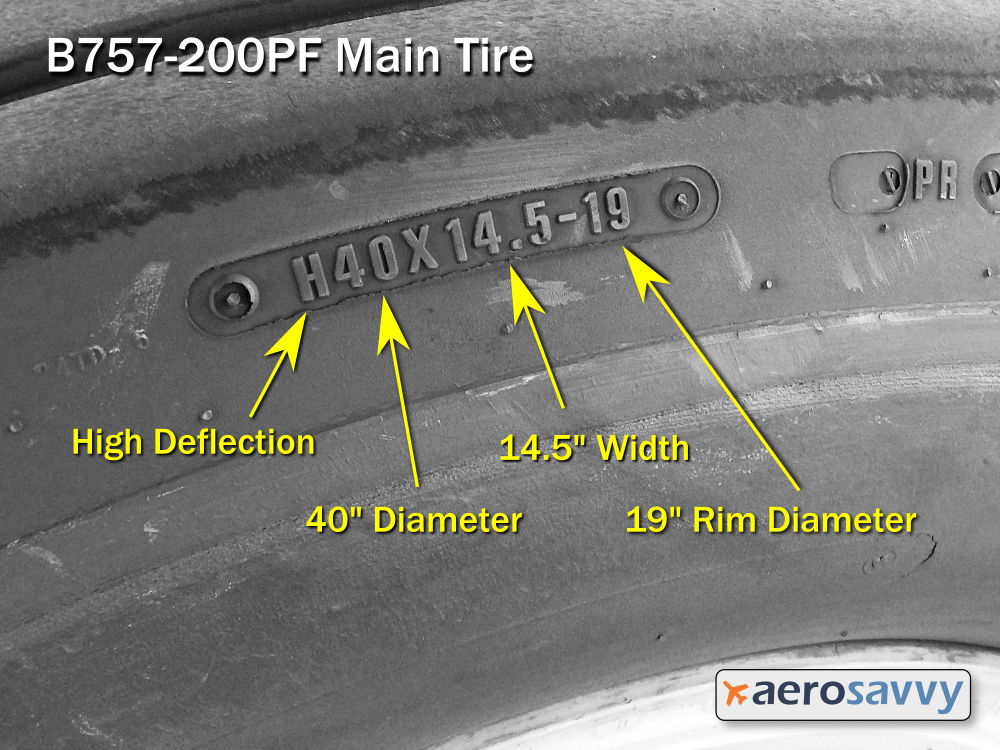 Simply mount the tires so that the tread pattern faces the direction of travel of the vehicle.
Simply mount the tires so that the tread pattern faces the direction of travel of the vehicle.
Rubber with an asymmetric device should only be mounted according to the marking, since each individual side is designed for its own tasks and should never be confused. The correct direction of asymmetric tires will help determine the labels:
Outside, or the outer side of the tire, must face outward.
Inside, or the inner side, respectively, looks inside the car.
Right and left asymmetric tires are much less common. Left (or simply L) will be written on one tire - it means that it must be placed to the left of the body, Right (R) - to the right. You can change them only on one side of the body - front with rear and vice versa.
But much more often, directional tires can be mounted on a rim on either side, the main thing is to follow the direction of the pattern.
And don't forget to balance freshly assembled wheels - tires will never show their advantages and characteristics without good balance. Only after that you can proceed to the installation on the hubs. After installation, go around the car in a circle and check the markings. Recall that we need the rotation direction under the Rotation arrow. If you have an asymmetric directional tire, then make sure that only the Outside is visible. Left (Left) and right (Right) asymmetric tires must show the sides of the body in the direction of travel.
Only after that you can proceed to the installation on the hubs. After installation, go around the car in a circle and check the markings. Recall that we need the rotation direction under the Rotation arrow. If you have an asymmetric directional tire, then make sure that only the Outside is visible. Left (Left) and right (Right) asymmetric tires must show the sides of the body in the direction of travel.
Check out this video for a couple more tips on directional tires: adv.rbc.ru
See also
Numbers and letters on a car tire provide all the necessary information about it. True, it is not easy to read them - here, even in the designation of one parameter, several measurement systems can be used simultaneously. In addition, many values are expressed in special indices. We decipher all important labels for the buyer.
adv.rbc.ru
A tire marking is information about its properties printed on the outer rim.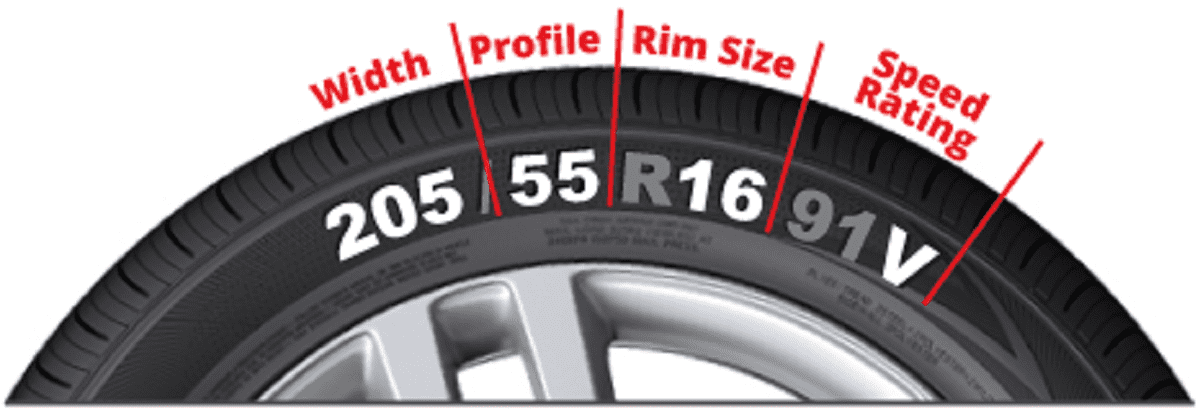 This is a huge amount of useful information. Here are the tire parameters that can be read from the tire itself:
This is a huge amount of useful information. Here are the tire parameters that can be read from the tire itself:
The size designation is written in the form XXX/XX R XX. For example 225/65 R17.
The first three digits are the tire width in millimetres. In our case - 225 mm.
The second digit is the height, but not in millimeters, but as a percentage of the width. In our case, its height is 146.25 mm (225 * 0.65).
The third number after R is the outside diameter of the wheel or the inside diameter of the tire in inches. In our case, this is 17 inches or 43. 18 cm. Do not confuse - this is the radius, not the diameter. The letter R itself stands for the radial design of the tire, which confuses many. Sometimes Radial can be written separately on the bus - the meaning is the same. In addition to the radial, there is also a diagonal design (D), but these are not found today.
18 cm. Do not confuse - this is the radius, not the diameter. The letter R itself stands for the radial design of the tire, which confuses many. Sometimes Radial can be written separately on the bus - the meaning is the same. In addition to the radial, there is also a diagonal design (D), but these are not found today.
Two numbers and a letter immediately follow the size. These are the codes for the load capacity and speed limit of the tire.
Two digits - capacity or load index. This is a complex system of values, in which the larger the number, the greater the load, but the step size between the values is not constant. Therefore, it is easier to just know the most common of them:

The index value is the load on each wheel separately. To calculate the total load capacity, multiply by 4. This value can also be written elsewhere in a simpler form: Max load - xxx kg.
Photo: Shutterstock
The letter after the two digits of the load index is the index of the maximum speed for which the tire is designed. It starts with A, but the values relevant for modern machines start with the second half of the Latin alphabet:
This is not the limit, but the maximum "comfortable" value. In exceptional cases, you can even exceed it by 20-30%, but it is better to avoid this.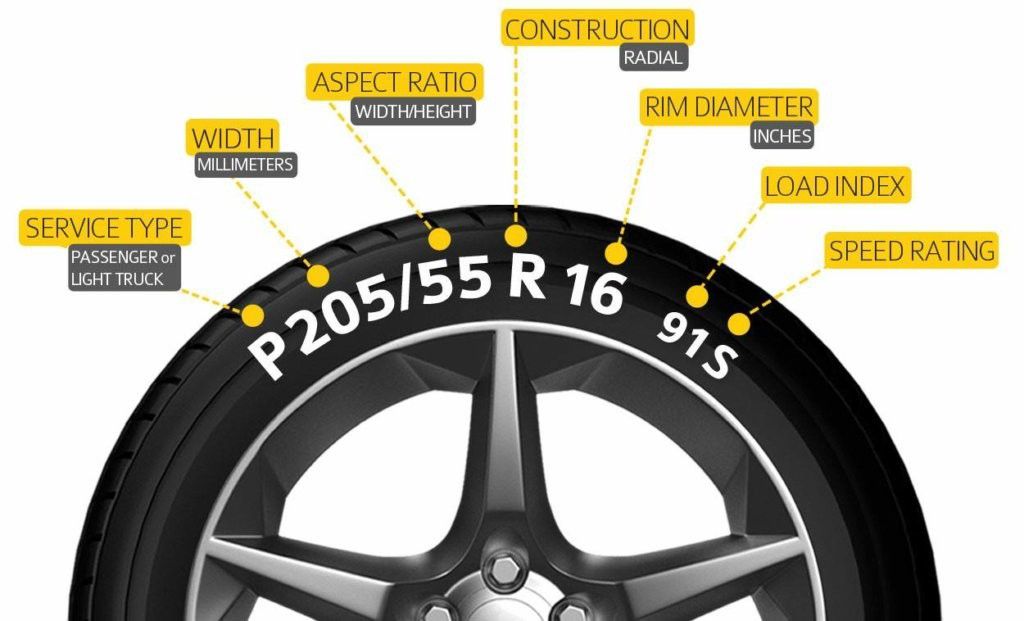
Another key parameter is the timing of the tire. Usually it is indicated in a rounded rectangle, but may be without a frame. The first two digits are the week, and the second two are the year.
Also, three more parameters are usually indicated on the tire - wear resistance margin, grip quality class and temperature index.
The wear index is denoted by the word treadwear. Its unit is 480 km. Multiply the number next to that word by that value. If treadwear is 400, it means that under test conditions at the test site, such a tire has worn out after driving 192,000 km. Also, this parameter can be designated separately as the abbreviation TWI.
Traction is a measure of how well a tire grips on wet road surfaces. It has values from AA - the best level, to CC - the worst. Tires for regular passenger cars usually have class A, and the highest class is for sports and racing.
Temperature is the tire's ability to withstand heat when driving at a certain speed. There are three values here:
There are three values here:
Tires of modern passenger cars most often have this index value - A.
Photo: Shutterstock
The letter E with a number indicates that the tire complies with the rules of the European Tire Standards Association (ETRTO) and has a corresponding certificate . The number indicates the country that issued it - but this does not matter, since the ETRTO requirements are the same. In this case, the tire can be produced anywhere.
The weather conditions in which this tire is allowed to be used are also usually indicated:

Winter tires must have a first, second or third designation.
On some tires you can find the designation of the type of car for which they are intended:
In addition, the tire may be marked:
